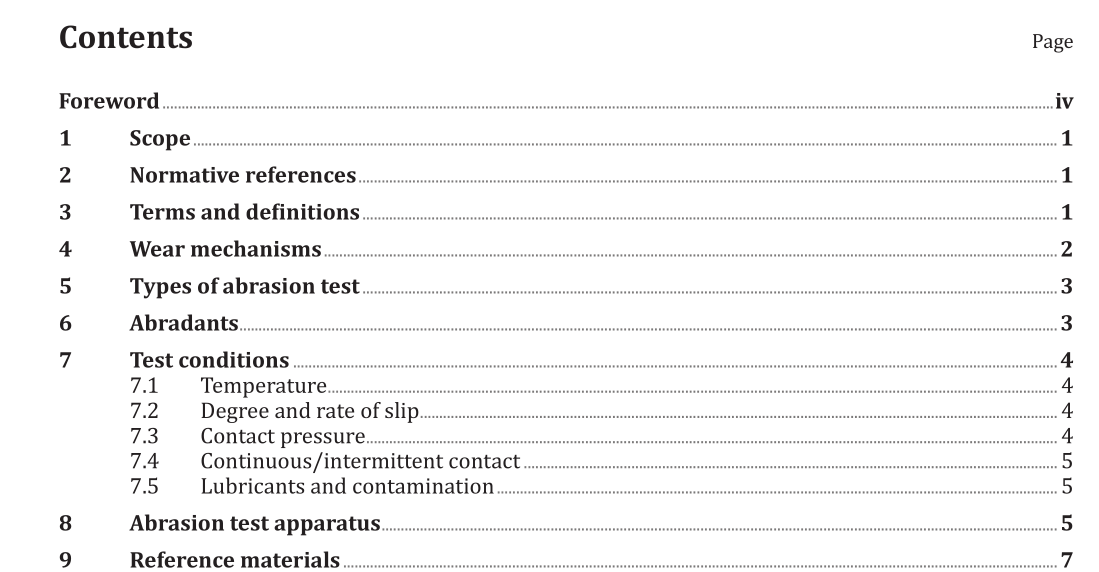ISO 23794:2015 pdf download.Rubber, vulcanized or thermoplastic — Abrasion testing — Guidance
1 Scope
This International Standard provides guidance on the determination of the abrasion resistance of vulcanized and thermoplastic rubbers. It covers both solid and loose abrasives. The guidelines given are intended to assist in the selection of an appropriate test method and appropriate test conditions for evaluating a material and assessing its suitability for a product subject to abrasion. Factors influencing the correlation between laboratory abrasion testing and product performance are considered, but this International Standard is not concerned with wear tests developed for specific finished rubber products, for example, trailer tests for tyres.
4 Wear mechanisms
The mechanisms by which wear of rubber occurs when it is in moving contact with another material are complex, but the principal factors involved are cutting and fatigue. It is possible to categorize wear mechanisms in various ways and commonly distinction is made between
— abrasive wear,
— fatigue wear, and
— adhesive wear.
Additionally, wear by roll formation is sometimes considered as a separate mechanism.
Abrasive wear is caused by sharp asperities cutting the rubber.
Fatigue wear is caused by particles of rubber being detached as a result of dynamic stressing on a localized scale.
Adhesive wear is the transfer of rubber to another surface as a result of adhesive forces between the two surfaces.
Wear by roll formation is where there is progressive tearing of a layer of rubber which forms a roll.
There can also be corrosive wear due to direct chemical attack on the surface. The term erosive wear is sometimes used for the action of particles in a liquid stream. In any particular wear situation, more than one mechanism is usually involved, but one might predominate. Abrasive wear requires hard, sharp cutting edges, and high friction. Fatigue abrasion occurs with smooth or rough but blunt surfaces and does not need high friction. Adhesive wear is much less common, but can occur on smooth surfaces. Roll formation requires high friction and relatively poor tear strength. Roll formation results in a characteristic abrasion pattern of ridges and grooves at right angles to the direction of movement. Abrasive wear or roll formation results in much more rapid wear than fatigue processes. The mechanism and hence the rate of wear can change, perhaps quite suddenly, with the conditions, such as contact pressure, speed, and temperature. In any practical circumstances, the mechanisms can be complex and critically dependent on the conditions. Consequently, the critical factor as regards testing is that the test conditions have to essentially reproduce the service conditions if a good correlation is to be obtained. Even a comparison between two rubbers might be invalid if the dominant mechanism is different in testing and in service. The range of conditions encountered in applications such as tyres is so complex, that they cannot be matched by a single test.
ISO 23794:2015 pdf download
